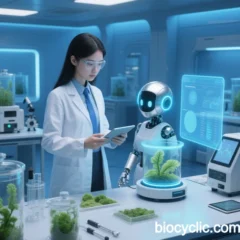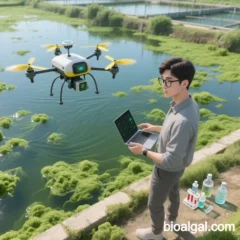CRISPR (Clustered Regularly Interspaced Short Palindromic Repeats) is a revolutionary gene-editing technology derived from a natural bacterial immune system.
Key points:
Uses a guide RNA to direct the Cas9 protein to cut specific DNA sequences.
Allows precise insertion, deletion, or modification of genes.
Applications: curing genetic diseases, improving crops, biomedical research.
Nobel Prize in Chemistry (2020) awarded to Doudna & Charpentier for its discovery.
It’s faster, cheaper, and more accurate than older gene-editing methods.

RNASynthetic.com
RNA Synthetic Biology (SynBio + RNA): Engineering Artificial RNA Molecules for Therapeutics and Biomanufacturing Systemic Innovation from Gene Regulation to Industrial-Scale Production 1. Technological Foundations: RNA as Dynamic Biological Tools The fusion of synthetic biology and RNA technology le…

SynBioQ.com
Quantitative Synthetic Biology: A Scientific Framework for Predictable and Tunable Biomanufacturing Integrating Multidimensional Technologies and Systematic Engineering Practices 1. Core Principles Quantitative synthetic biology is an interdisciplinary field that applies mathematical modeling, machi…

GenRNA.com
Proactive Health: AI-Driven Disease Risk Prediction and Human Longevity Revolutionizing Healthcare Through Multimodal Data Integration and Precision Interventions 1. Technological Foundations: Core AI Capabilities Multimodal Data Integration AI synthesizes genomics (e.g., polygenic risk scores), ele…

biocyclic.com
Bio-Cyclic Systems: Closing Resource Loops Through Microbial Degradation and Algal Carbon Fixation 1. Core Principle: Engineering Natural Processes Bio-Cyclic systems mimic natural ecosystem flows by integrating microbial degradation and algal carbon fixation into closed-loop resource regeneration: …

bioalgal.com
Bioalgal Technology: Environmental and Bioenergy Applications Integrating Synthetic Biology and Systems Engineering for 2025 Innovations 1. Environmental Breakthroughs Pollutant Remediation and Resource Cycling Wastewater treatment: Algae absorb nitrogen, phosphorus, and heavy metals (e.g., cadmium,…

ecosynbio.com
Ecology Synthetic Biotechnology (EcoSynBio): Engineered Biosystems for Environmental Remediation and Sustainable Production Systemic Solutions Based on 2025 Synthetic Biology Frontiers Core Paradigm: Transitioning from Linear Economy to Biocycling EcoSynBio integrates gene editing, metabolic enginee…

GenRNA.com
Core Future Directions in Gene Editing Technology (2025 Trends and Advances) I. Innovations in Gene-Editing Tools Precision and Efficiency Prime Editing 2.0: The optimized PE7 enzyme achieves over 90% editing efficiency, enabling single-base corrections (e.g., APOE ε4 allele) and precise kilobase-sc…

GenRNA.com
Advances in Gene Editing for Human Longevity and Lifespan Extension (2025 Update) 1. Core Innovations: Precision and Multifunctionality Fourth-Generation Editing Systems Prime Editing 2.0: The optimized PE7 enzyme achieves over 90% editing efficiency, correcting aging-related single-base mutations (…

GenRNA.com
Codon Engineering in Personalized Anti-Aging: Applications and Implementation Pathways Customized Codon Optimization Strategies Based on Individual Genomic Features 1. Technological Foundations Codon engineering enables precise regulation of protein expression efficiency, stability, and functionalit…

CodonBio.com
Codon Bio: Innovations in Codon Optimization, Gene Synthesis, and Protein Engineering 1. Codon Optimization Breakthroughs AI-Driven Codon Optimization Absci’s CO-BERTa model integrates deep learning with high-throughput experimental data to predict codon usage for optimal protein expression. This sy…










